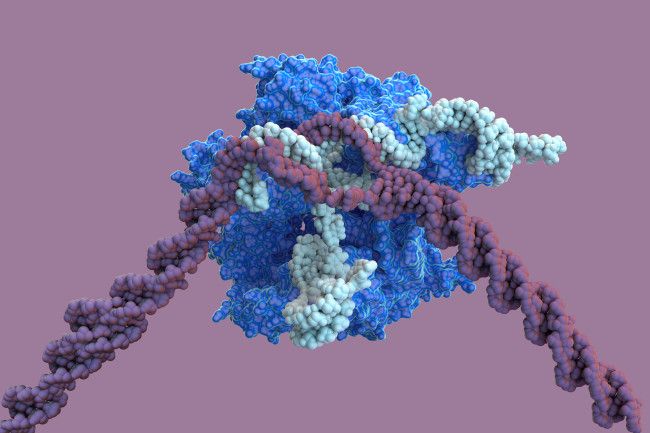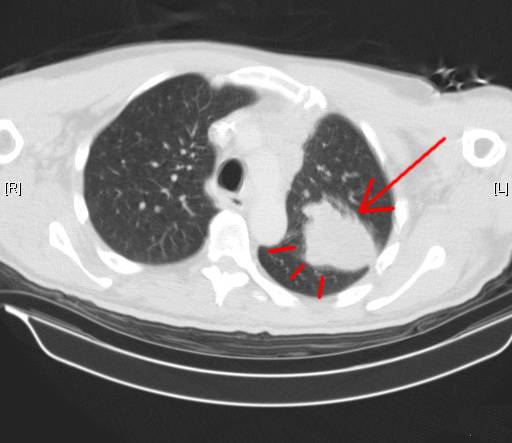Breakthroughs include measuring the true nature of the universe, finding new species of human ancestors, and unlocking new ways to fight disease.
Get the latest international news and world events from around the world.

Gene Therapies Make it to Clinical Trials
After years of ethical debates and breakthroughs in the lab, CRISPR has finally made its way to clinical trials. Researchers are now looking at whether the DNA-editing tool, as well as more conventional gene therapies, can effectively treat a wide array of heritable disorders and even cancers.
“There’s been a convergence of the science getting better, the manufacturing getting much better, and money being available for these kinds of studies,” says Cynthia Dunbar, a senior investigator at the National Heart, Lung, and Blood Institute. “It’s truly come of age.”
CRISPR — formally known as CRISPR-Cas9 — has been touted as an improvement over conventional gene therapy because of its potential precision. CRISPR (clustered regularly interspaced short palindromic repeats) is a genetic code that, contained in a strand of RNA and paired with the enzyme Cas9, acts like molecular scissors that can target and snip out specific genes. Add a template for a healthy gene, and CRISPR’s cut can allow the cell to replace a defective gene with a healthy one.
The Lazareth LMV 496, a true motorcycle that can fly
With the Lazareth LMV 496, the flying motorcycle is no longer a myth. In addition to flying, it can also travel on the road.
Lazareth LMV 496, the Flying Motorcycle, powered on the road by an electric motor and jet engines, can both fly and travel on road.
What’s Up: January 2020 Skywatching Tips from NASA
What can you see in the night sky this month? The peak of the Quadrantid meteor shower, Mars rises with its “rival” — the red giant star Antares — and the Moon and Venus pair up.
Get more info and sky charts at https://go.nasa.gov/2OI1iiA

This Is How The Universe Changes With Every New Year That Passes
With each new year that comes upon us, there are a slew of new events awaiting us not only here on Earth, but throughout the entire observable Universe. Despite all appearances that things don’t change very much, particularly on cosmic scales, our planet, the Solar System, the galaxy, and even the entire Universe all undergo significant metamorphoses that are not only detectable, but that cumulatively add up as time goes on.
It might be easy to notice the major events as Earth orbits the Sun, such as the changing moon phases, eclipses, meteor showers, and comets passing through our skies. Variable stars change their appearances, new stars form, and old stars die. Occasionally we’ll even witness a cataclysmic event, such as a supernova, black hole merger, or gamma-ray burst. But even a single year can herald some amazing ways our Universe is forever altered.

DCA Dichloroacetate Breakthrough Anticancer Agent
Thoughts on this. True or BS.
DCA Dichloroacetate Breakthrough Anticancer Agent
Mary, an old patient in my office, called in last week to ask for advice about her husband, Jim. He had been quite healthy for many years, and recently noticed back pain. His primary care doctor ordered a CAT scan which showed a large lung mass (Red Arrow Above image) and destructive lesions in the spine. Biopsies confirmed the lung mass was indeed cancer, with metastatic spread to the thoracic vertebral bodies. Jim was referred to the local oncologist who started radiation and chemotherapy. Above Header Image CAT scan of lung cancer mass (Red Arrow) in left lung courtesy of wikimedia commons…
After a week of chemotherapy, Jim was miserable from the adverse effects of nausea, and vomiting, and loss of appetite. Jim felt so bad, he declined any further chemotherapy treatment. Mary asked if I had any suggestions.
Bionic Skin Lets Prosthetic Limbs Feel
This bionic skin lets amputees feel their prosthetic limbs.
